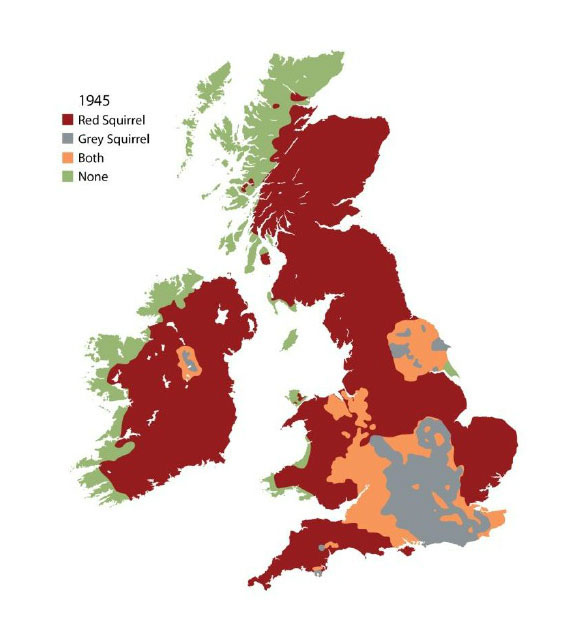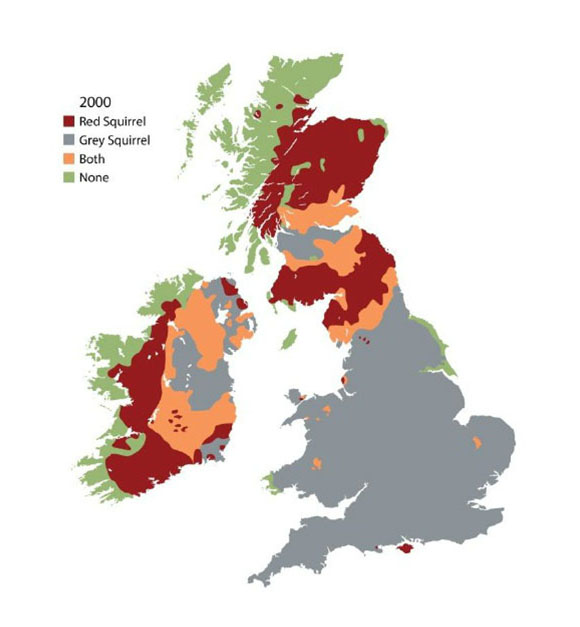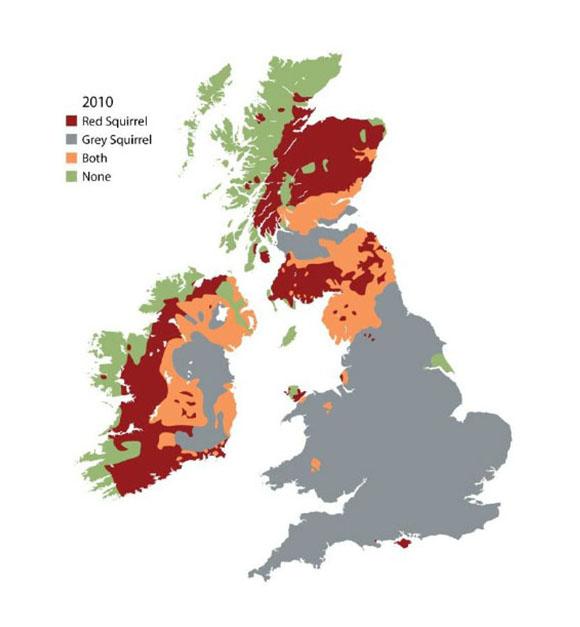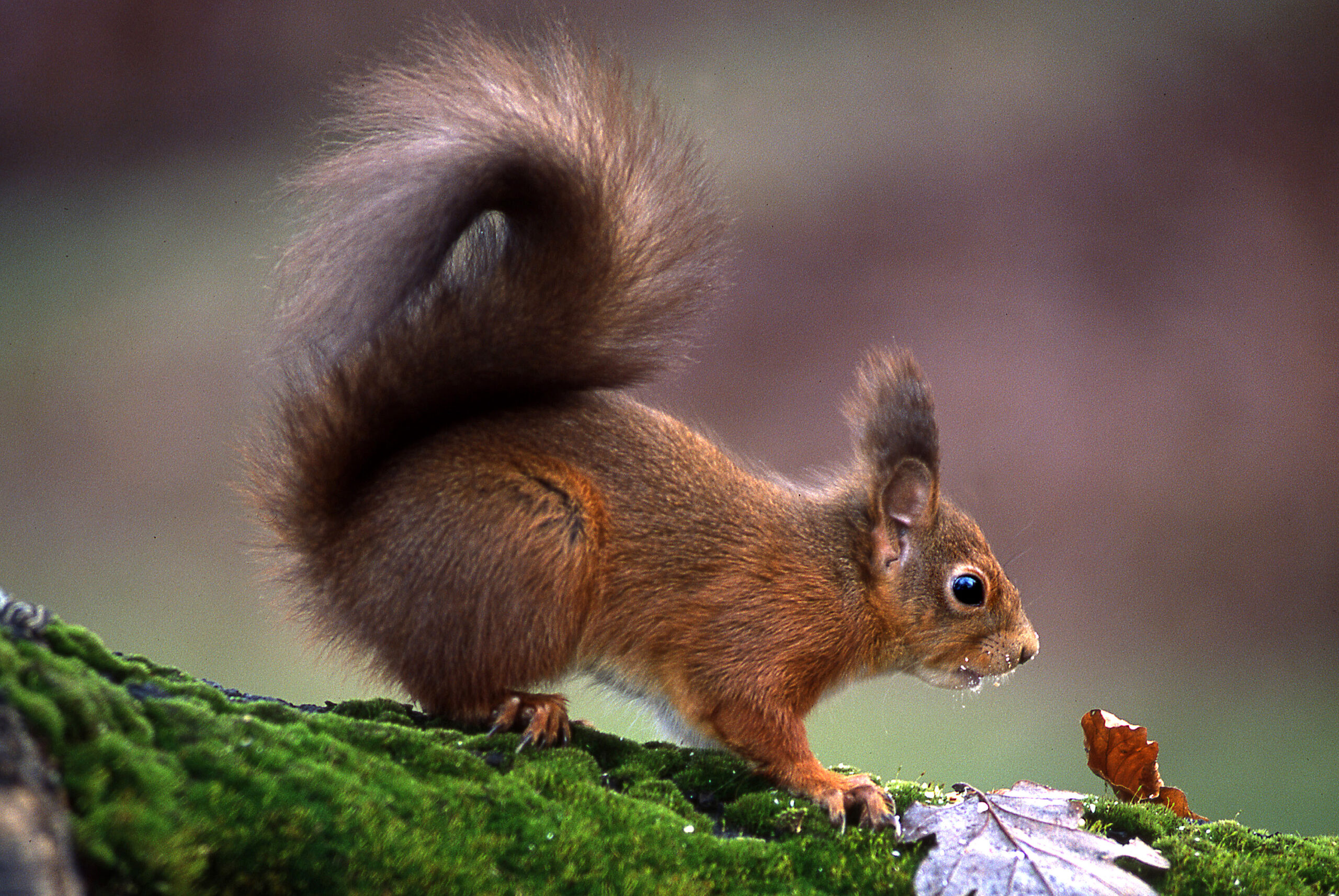The United Kingdom is host to two species of squirrel, the indigenous red (Sciurus vulgaris) and invasive grey (Sciurus carolinensis) from North America.
As the maps show, the story for red squirrels over the past seven decades has been disastrous following the introduction of invasive greys, allegedly introduced to the UK in the 1870s as ornamental species, expanding rapidly through native territories.
Nature England in 2018 published estimates that The British Isles hosts populations of 287,000 reds and 2.7 million greys. While outnumbered over 10 to one, reds maintain a number of strongholds across the country. Apart from western Ireland, Scotland and the north more generally, islands have naturally become important havens such as Brown Sea Island, The Isle of Wight and Anglesey.
Anglesey reds are a remarkable story of recovery becoming almost extinct by 1997 with 40 individuals remaining in one woodland from one female bloodline. Through systematic efforts to eradicate greys from the island alongside reintroductions, the red squirrel population now sits at around 700-800 individuals.
In Scotland, a recent survey shows the number of reds is on the rise thanks to efforts from local conservation groups. The fourth annual survey of 659 participants reported sightings of 255 grey and 659 red squirrels respectively across the Highland Boundary Fault Line stretching from Argyll to Aberdeenshire.
Greys outcompete reds by carrying a strain of viruses known as Parapoxvirus, the adverse effects of which they appear to be immune, unlike reds which perish from the disease. Greys also consume vast quantities of ‘unripe’ fruits which reds cannot, denying the latter a staple food source they have evolved to depend upon. Reds also reproduce at a far slower rate when exposed to stressful conditions.
Given the high numbers of greys as well as much public opinion against specific eradication methods, new techniques such as ‘fertility controls’ have been trialled over past years with the Animal and Plant Health Agency (APHA) currently in its fifth and final year of the research phase for oral contraceptives.
Though the story for red squirrels over the past several decades has been bleak, these small victories, as well as a groundswell of organisations and volunteer groups across the UK, push towards a tipping point in favour of reds in coming years.
A combination of efforts to repopulate forest corridors linking up isolated red populations, effective grey squirrel fertility controls and supporting monitoring groups on the ground, shows that reds could be on the verge of making a gradual but promising return.

Maps by Shuttleworth C. @ Red Squirrel Survival Trust.



Red Squirrel © Allan Potts
